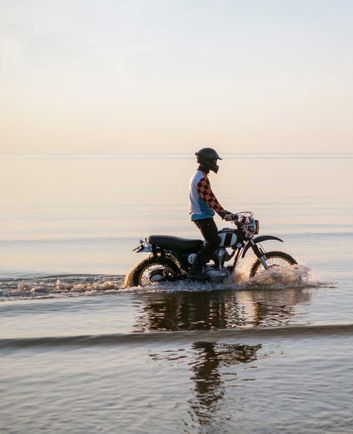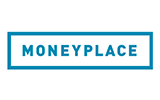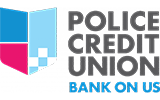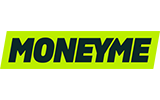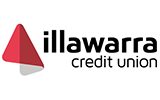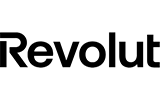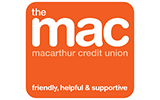How do motorcycle loans work?
A motorbike loan is a type of personal loan used to finance the purchase of a motorcycle. These loans are available from banks, credit unions and specialist lenders, with secured and unsecured options to suit different budgets and borrowing needs.
Motorcycle loans work much like car loans and usually offer:
- Fixed or variable interest rates
- Loan terms from 1–7 years
- Borrowing amounts from $2,000 to $100,000
- Weekly, fortnightly or monthly repayments
- No deposit required
- Finance options for new or used bikes
Types of motorcycle loans
When financing a motorbike through a lender, you’ll generally have two main options:
Secured motorcycle loans
With a secured personal loan, the bike you purchase is used to secure the finance. Because the loan is backed by a physical asset, lenders tend to offer lower interest rates and higher borrowing limits, which can be great if you’re buying a premium model. The downside is that if you fail to make repayments, the lender can reclaim and sell the bike.
Unsecured motorcycle loans
An unsecured personal loan is not tied to the bike or any other asset. These loans usually come with higher interest rates and lower borrowing limits, as they carry more risk for the lender. However, they offer greater flexibility, allowing you to use the funds for related expenses such as helmets, riding gear and accessories. Loan terms may also be shorter compared to secured options.
Motorcycle finance: Secured vs unsecured
Interest rates | |
Secured | Fixed or variable, starting from around 5% p.a. |
Unsecured | Fixed or variable, starting from around 6% p.a. |
Loan term | |
Secured | 1–7 years |
Unsecured | 1–7 years (some lenders may only offer up to 5 years) |
Borrowing limit | |
Secured | Typically up to $100,000 but higher limits can apply |
Unsecured | Usually between $5,000 and $60,000 |
Loan purpose | |
Secured | To purchase a motorbike |
Unsecured | To buy a motorbike, but can also be used to cover a helmet, protective clothing and a luggage system |
Fees | |
Secured | Generally lower |
Unsecured | Usually higher |
| Secured | Unsecured | |
|---|---|---|
Interest rates | Fixed or variable, starting from around 5% p.a. | Fixed or variable, starting from around 6% p.a. |
Loan term | 1–7 years | 1–7 years (some lenders may only offer up to 5 years) |
Borrowing limit | Typically up to $100,000 but higher limits can apply | Usually between $5,000 and $60,000 |
Loan purpose | To purchase a motorbike | To buy a motorbike, but can also be used to cover a helmet, protective clothing and a luggage system |
Fees | Generally lower | Usually higher |
What are the best motorcycle finance rates?
The best motorcycle finance rates start from 5.67% p.a. But the actual interest rate you’re charged will depend on your overall application and risk profile.
Lenders will consider your credit score, income, expenses, employment status, living situation and other factors about your situation to determine your rate. They will also consider the age and type of motorbike you’re using the loan to purchase.
Our rate comparison table below shows how much of a difference the interest rate can make on your monthly repayments. This is based on some popular motorcycle models in Australia.
Motorbike | Yamaha MT-07 – $15,000 |
|---|---|
Interest rate (p.a.) |
|
Monthly repayment |
|
Total interest charged |
|
Motorbike | Kawasaki Ninja ZX-6R – $18,600 |
Interest rate (p.a.) |
|
Monthly repayment |
|
Total interest charged |
|
Motorbike | Triumph Rocket 3 GT Storm – $37,390 |
Interest rate (p.a.) |
|
Monthly repayment |
|
Total interest charged |
|
| Motorbike | Interest rate (p.a.) | Monthly repayment | Total interest charged |
|---|---|---|---|
Yamaha MT-07 – $15,000 |
|
|
|
Kawasaki Ninja ZX-6R – $18,600 |
|
|
|
Triumph Rocket 3 GT Storm – $37,390 |
|
|
|
Even if the monthly repayment difference seems small (i.e. from 5.5% to 7.5%), the total interest charged can add thousands to your motorbike loan.
While the lender will ultimately determine the rate you qualify for, choosing a shorter loan term can greatly cut interest costs – provided you can afford the higher repayments.
Low rate motorbike loans
| Loan | Interest rates from | Comparison rates from^ | Loan amounts |
|---|---|---|---|
| MoneyPlace Secured Car Loan (New) | 5.67% | 6.10% | Up to $80,000 |
| SWSCU 5 Year Term Vehicle Loan | 5.79% | 5.79% | $1,000 - $200,000 |
| Horizon Bank Personal Loans Secured by Mortgage | 5.79% | 7.84% | $500 - $100,000 |
| Horizon Bank Personal Loans Secured by Deposits | 5.79% | 6.00% | $500 - $100,000 |
| MoneyPlace Secured Car Loan (Used) | 5.80% | 6.23% | Up to $80,000 |
| Plenti Personal Loan | 5.95% | 5.95% | Up to $65,000 |
| NOW Finance Unsecured Personal Loan | 5.95% | 5.95% | $5,000 - $50,000 |
| IMB Bank New Secured Fixed Car Loan | 5.99% | 6.34% | $2,000 - $125,000 |
| Move Bank New car loan | 5.99% | 6.26% | $5,000 - $150,000 |
| Police Credit Union Better Fixed Car Loan - min $20K | 5.99% | 6.40% | $20,000 - $1,000,000 |
What should you look for in motorcycle finance?
Interest rate
Lenders often advertise their lowest rate, but your actual rate depends on factors like your credit score and application details. Some show a range, while others use “starting from” rates.
Comparison rate
This reflects the interest rate plus most fees, giving a clearer picture of the loan’s true cost. Ideally, it should be close to the interest rate, but remember it’s based on standard assumptions that may not match your situation.
Features
Check if you can make extra repayments and whether redraws are allowed. Paying extra can reduce interest, but watch for any fees or restrictions.
Flexibility
Look at loan term options. Longer terms mean lower repayments but higher total interest. Also, check if the loan can be used for both new and used bikes and whether secured or unsecured options are available.
Why the lowest rate isn’t everything

Phil Collard, Personal Loans and Asset Finance Expert at Money.com.au
"The best motorcycle loan is not always the one with the flashiest headline rate. Hidden costs like establishment fees, account-keeping charges, or penalties for paying out early can quickly outweigh any savings. Understanding the borrower’s needs and financial profile is key to finding genuine value. Consider speaking to a personal loan broker or crunching the numbers on a personal loan calculator before jumping in."
Phil Collard, Personal Loans and Asset Finance Expert at Money.com.au
Am I eligible for a motorcycle loan?
Every lender has different eligibility criteria for motorcycle loans, but as a general guide you’ll need to:
- Be 18 years of age or older
- Be an Australian citizen or permanent resident (or hold an acceptable visa)
- Have a fixed, verifiable address in Australia
- Have a stable source of income that can be verified
If you meet the basic eligibility for a motorbike loan, the lender will assess your application based on your financial position and credit history.
What documents do I need to provide the lender?
Once you’re ready to apply for motorbike finance, you’ll usually need to provide:
- Proof of identity, such as a driver’s licence, birth certificate, or passport
- Proof of income, like your two most recent payslips or latest tax return
- Details of any assets you own, such as a home or car
- A breakdown of your regular monthly expenses, including mortgage or rent, bills and insurance
If the motorcycle is being used as security, you’ll also need to provide details about the bike, including its age and type.
Self-employed applicants without payslips may need to apply for a low doc personal loan instead. This includes new business owners or seasonal employees.
Compare motorcycle loans to find your best deal
Get your best offers from multiple lenders at once. There's no obligation and checking your rates won't impact your credit score.
